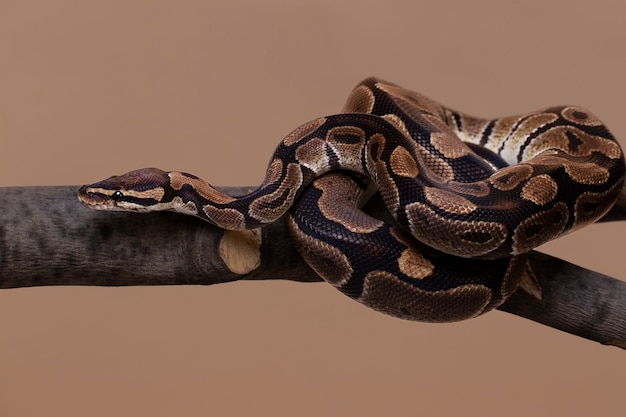10 Fascinating Facts about Ball Pythons

Ball pythons belong to the family Pythonidae.
They are native to sub-Saharan Africa.
Ball pythons are also known as royal pythons.
These snakes are named ball pythons because they curl themselves up into a tight ball when feeling threatened.
Ball pythons are popular pets due to their docile nature.
They come in various color morphs, including albino, pied, and banana.
These snakes are non-venomous and kill their prey by constriction.
Ball pythons have heat-sensing pits on their faces that help them locate warm-blooded prey.
They have a lifespan of about 20-30 years in captivity.
Ball pythons are known to have a slow metabolism and can go without food for several weeks or months.
They are mostly nocturnal, preferring to be active during the night.
These snakes have specialized teeth designed for grasping and holding their prey.
Ball pythons are excellent climbers and are often found hiding in trees or bushes.
They have the ability to switch between camouflage and vibrant colors depending on their mood.
Ball pythons have a unique pattern of scales that helps them blend into their surroundings.
They have a small, triangular-shaped head.
These snakes are ambush predators, relying on their excellent camouflage to surprise their prey.
Ball pythons molt their skin periodically as they grow.
They are known to be very gentle and rarely bite unless provoked.
10 Fascinating Facts about Ball Pythons part 2
Ball pythons have a reputation for being one of the most tolerant snakes when it comes to handling.
They are highly adaptable and can thrive in a variety of habitats, including grasslands, savannas, and forests.
Ball pythons rely heavily on their sense of smell to locate food.
These snakes have a distinct odor that they emit when feeling threatened or agitated.
They have a unique ability to go into a state of aestivation, where they can survive without food or water for long periods during extreme weather conditions.
Ball pythons have a slow growth rate compared to other snake species.
They are known for their ability to curl themselves up into tight spaces, such as crevices or hollow logs.
Ball pythons are oviparous, meaning they lay eggs.
Female ball pythons can lay anywhere between 3 to 11 eggs in a single clutch.
These snakes are excellent swimmers and can move through water with ease.
Ball pythons are renowned for their ability to become completely motionless when feeling threatened, a behavior known as freezing.
They have a unique respiratory system, with one lung being significantly larger than the other.
Ball pythons have a characteristic blushing pattern, where certain scales have a pinkish hue.
These snakes have a slender body shape, making them excellent burrowers.
Ball pythons have a slow metabolism, which allows them to conserve energy by reducing their need for food.
They have a relatively small appetite compared to other snake species.
Ball pythons have a docile temperament, making them suitable for inexperienced snake owners.
These snakes rely on their excellent camouflage to hide from predators such as birds of prey and larger snakes.
Ball pythons use their flicking tongue to gather information about their surroundings.
They have a relatively short lifespan compared to other snake species, with some living up to 40 years in the wild.
Ball pythons are highly sought after by collectors due to the wide range of color and pattern morphs available.
These snakes have a unique defense mechanism where they will curl into a ball and release a foul-smelling odor to deter predators.
Ball pythons have a slow metabolism, which allows them to survive for long periods without food.
They are known for their ability to regulate their body temperature by utilizing various microhabitats in their environment.
Ball pythons have a communal nesting behavior, where multiple females may lay their eggs in the same burrow or nest site.
These snakes are part of a conservation breeding program to help preserve the genetic diversity of captive populations.

